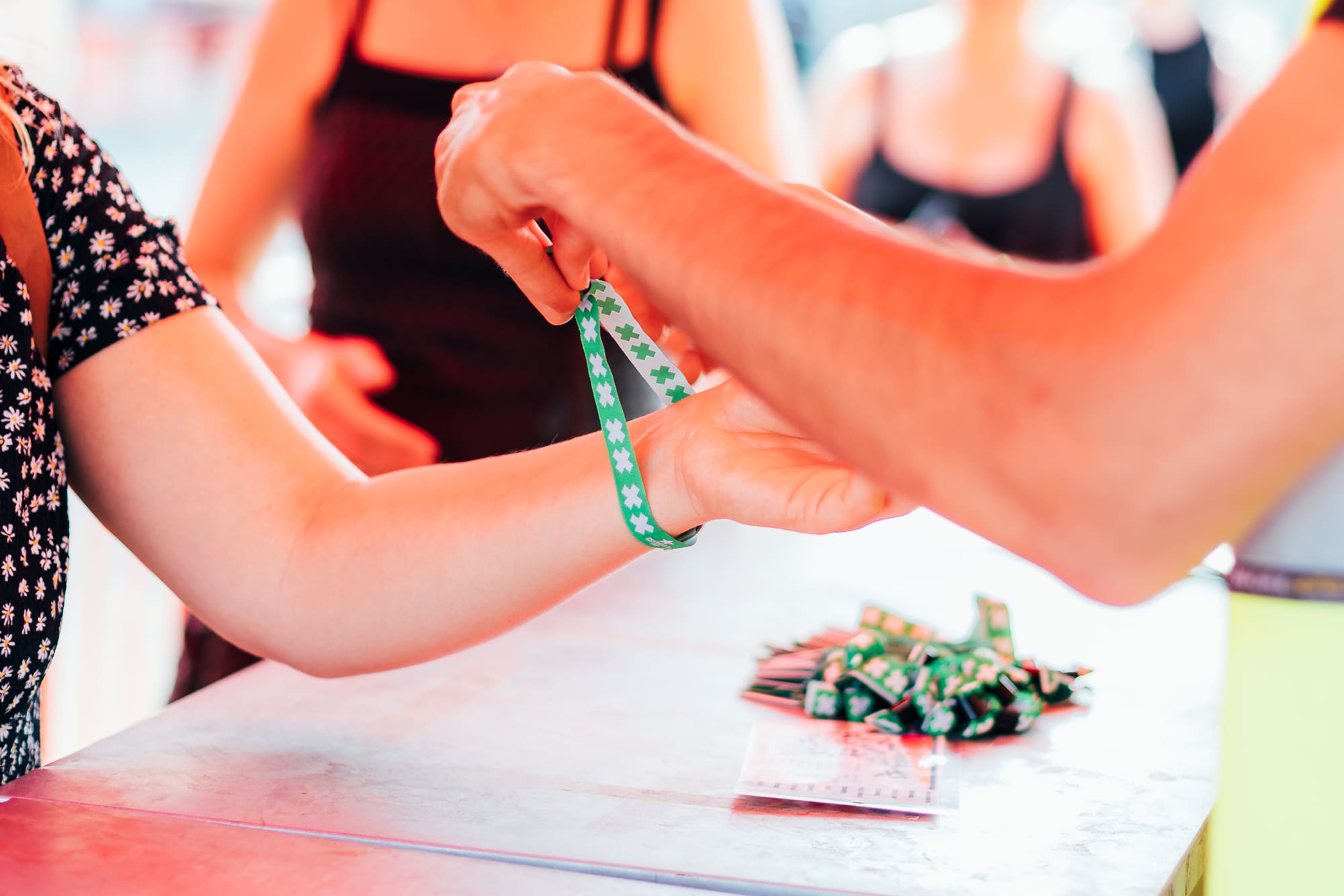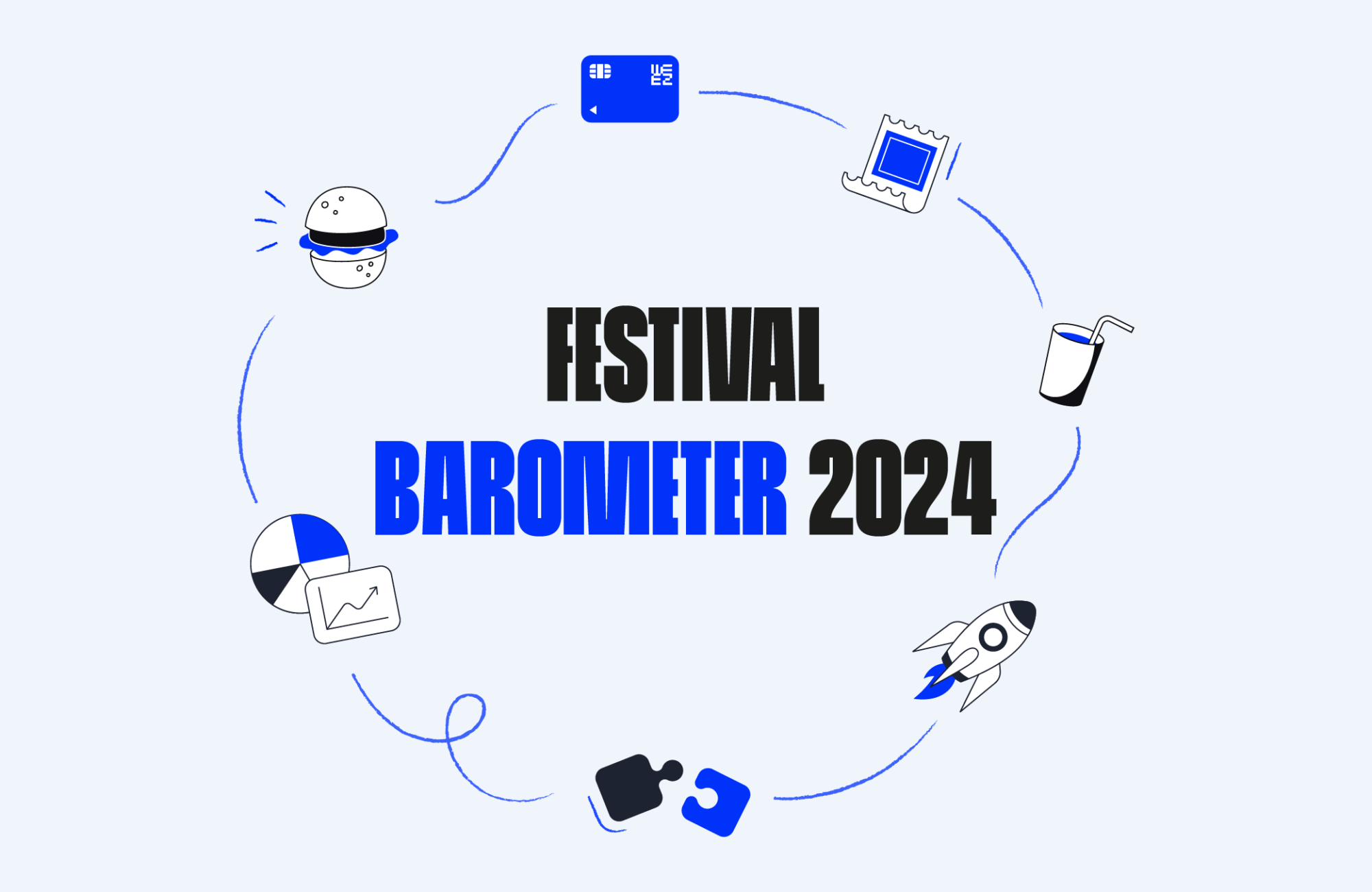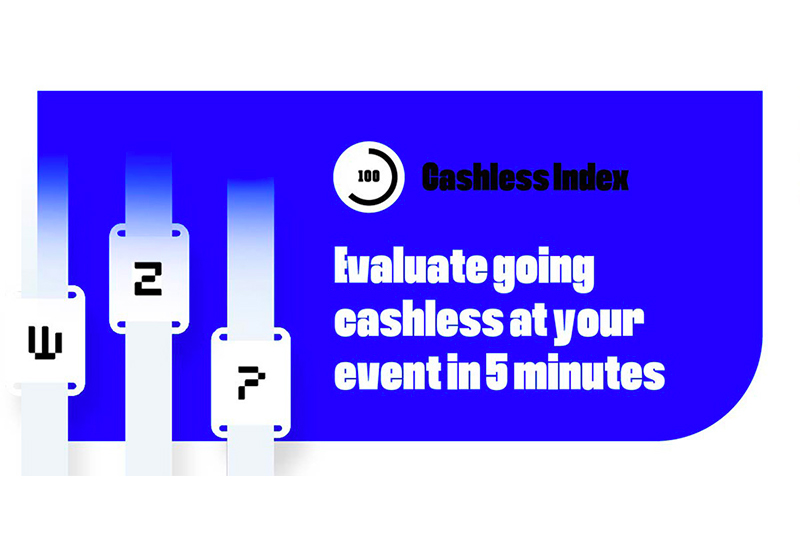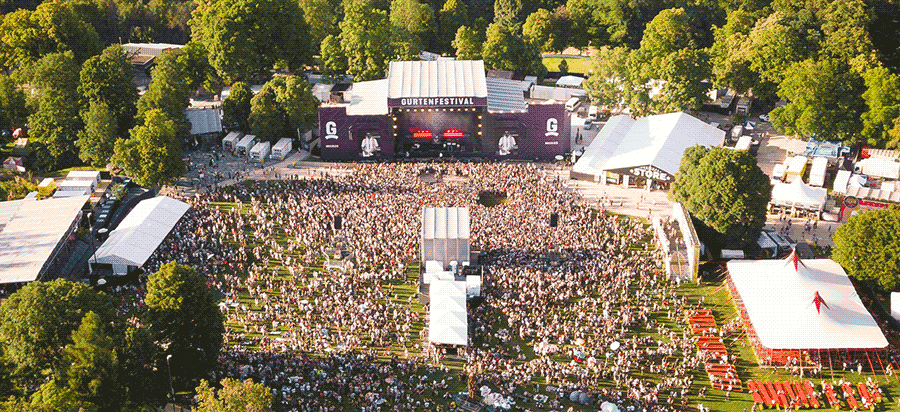Cashless payment systems at festivals are ideal for both organisers and attendees. Discover how and why to implement a cashless payment solution at your event.
[summary]
1. What is cashless?
The term “cashless” refers to any payment method that does not involve cash. You might wonder if it is the same as contactless; while they share some similarities, they are not entirely the same. Check out this article for more on why you should opt for cashless rather than just contactless payments.
When discussing cashless payments in the context of festivals, we refer to on-site transactions made using cashless wristbands equipped with RFID or NFC technology. This technology has transformed the operation of festivals, benefiting both organisers and attendees. Financial transactions become centralised, allowing organisers to access precise and detailed information about their sales in real-time. Attendees benefit from the convenience of not needing cash and can make transactions quickly, easily, and securely using their wristbands. However, the advantages extend beyond simple payment functionality for both organisers and festival-goers.
2. How are RFID/NFC cashless wristbands used at a festival?
At a festival, cashless wristbands serve as both a payment and access control method. Attendees need to follow these steps to use them:
- Creating an account and linking the ticket: Attendees must register and create an account linked to their ticket.
- Wristband top-up: After creating the account, festival-goers must top up their wristbands. This can be done via the website or mobile app before the event (and, depending on the configuration, during the event). In addition to online options, there will be top-up points on-site, where attendees can recharge their cashless wristbands using a bank card or coins.
- Exchanging the ticket for a wristband: Upon arrival at the festival, attendees must exchange their ticket for a pre-loaded wristband linked to the cashless account they created earlier.
- Using the wristband for payments: With their wristbands, attendees can make payments throughout the festival for food and drinks with a simple gesture. The transactions are fast and secure, significantly reducing waiting times.
- Requesting a refund post-festival: If attendees have a remaining balance on their cashless account, they can request a refund online.
- Keepsake: Many festival-goers keep their cashless wristbands as mementoes of their experience.
3. What can festival-goers do with their cashless wristband?
The cashless wristband is the ideal payment method for festival-goers, ensuring transaction security, reducing waiting times, and enhancing their overall experience. Specifically, a cashless wristband allows attendees to:
- Check their balance and transaction history.
- Top up the wristband via the event website or app.
- Make quick and easy purchases throughout the event.
- Access the festival and specific areas, such as VIP or backstage, by identifying themselves with the wristband.
- Enjoy the event worry-free, as the wristband can be deactivated if lost or stolen.
- Easily request a refund of any remaining balance.
4. Why should organisers set up a cashless system during their festival?
The benefits of a cashless system for festival organisers are numerous and extend far beyond payment processing, especially if all its features are fully utilised and key success indicators are monitored!
Key advantages of cashless directly related to payments at the festival
When we think of cashless for festivals, the first (and often only) thing that springs to mind is its function as a payment method. What are the advantages?
- Enhance the security of cash flows.
- Minimise human errors at bars.
- Simplify the management of festival accounts.
- Reduce queues, thus increasing sales.
“When a festival-goer is in a queue, every second that passes is money lost. The ability to spend quickly, consume rapidly, and recharge efficiently translates into revenue for the festival.” – Carles Martínez, CMO of the Mallorca Live festival.
Key advantages of the cashless system for increasing festival revenue
Implementing a cashless system can yield indirect benefits that boost a festival’s revenue. Here are some examples:
- Increase the average spend: With this system, participants pre-load their wristbands, making their first expenditure happen before the festival, which reduces the feeling of spending while at the event. Moreover, since attendees can reclaim any unspent money after the event, they are less likely to limit their recharges to immediate consumption, facilitating sales, reducing queues, and encouraging increased spending.
- Lower staffing costs: Each server or vendor can handle more orders within the same timeframe, reducing the need for staff to process the same volume of transactions.
- Create personalised loyalty offers: Organisers can segment their audience and offer genuinely personalised deals.
- Negotiate partnerships: RFID technology and cashless systems open up various sponsorship opportunities, such as brand activations or using the chip in cashless wristbands (or cards, if that option is chosen) as advertising space for a sponsor’s logo.

The significant indirect advantage of cashless: data
The cashless system generates a wealth of data that can enhance resource optimisation and enable real-time operational oversight during the festival. This data can also help build audience loyalty through targeted communications and promotions for future event editions.
In addition to the aforementioned benefits, implementing a cashless system offers the following opportunities:
- Detailed statistics: By hosting a cashless event, you gain access to in-depth statistics regarding attendee purchasing behaviours, such as the most popular sales points and peak times. You can also identify high-spending individuals and best-selling products.
- Audience management: Thanks to the data from the wristband chip, you can efficiently manage and unify attendee rights, including access and special privileges for different attendee categories: general public, VIPs, and staff.
5. The importance of project management
If you are embarking on a project of this scale, which encompasses various aspects of the event, it’s essential to organise your team effectively. Appoint a cashless project manager to oversee the different areas involved and serve as the primary point of contact with your cashless service provider.
Engage with professionals and download this presentation of best practices for your project to ensure a successful implementation of a cashless system.
Would you like to implement a cashless system at your festival but are unsure where to begin?



